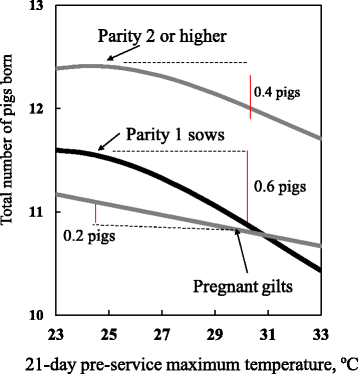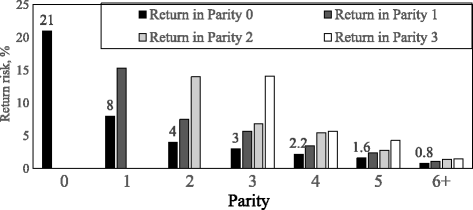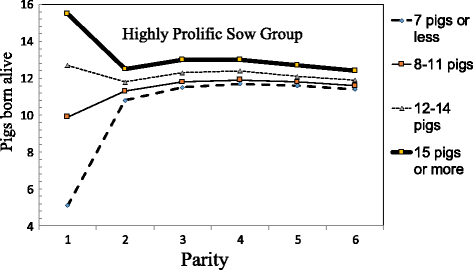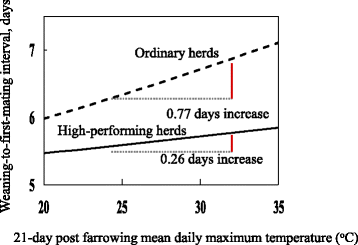Factors for improving reproductive performance of sows and herd productivity in commercial breeding herds
- PMID: 28405457
- PMCID: PMC5382409
- DOI: 10.1186/s40813-016-0049-7
Factors for improving reproductive performance of sows and herd productivity in commercial breeding herds
Abstract
We review critical factors associated with reproductive performance of female breeding pigs, their lifetime performance and herd productivity in commercial herds. The factors include both sow-level and herd-level factors. High risk sow-level groups for decreasing reproductive performance of female pigs are low or high parity, increased outdoor temperature, decreased lactation feed intake, single inseminations, increased lactation length, prolonged weaning-to-first-mating interval, low birth weight or low preweaning growth rate, a few pigs born alive at parity 1, an increased number of stillborn piglets, foster-in or nurse sow practices and low or high age at first-mating. Also, returned female pigs are at risk having a recurrence of returning to estrus, and female pigs around farrowing are more at risk of dying. Herd-level risk groups include female pigs being fed in low efficiency breeding herds, late insemination timing, high within-herd variability in pig flow, limited numbers of farrowing spaces and fluctuating age structure. To maximize the reproductive potential of female pigs, producers are recommended to closely monitor females in these high-risk groups and improve herd management. Additionally, herd management and performance measurements in high-performing herds should be targeted.
Keywords: Benchmarking; Production factors; Reproduction; Sow; Swine.
Figures





References
-
- Dial GD, Marsh WE, Polson DD, Vaillancourt JP. Reproductive failure: differential diagnosis. In: Leman AL, Straw BE, Mengeling WL, D’Allaire S, Taylor DJ, editors. Disease of swine. 7. Ames: Iowa State University Press; 1992. pp. 83–137.
Publication types
LinkOut - more resources
Full Text Sources
Other Literature Sources

